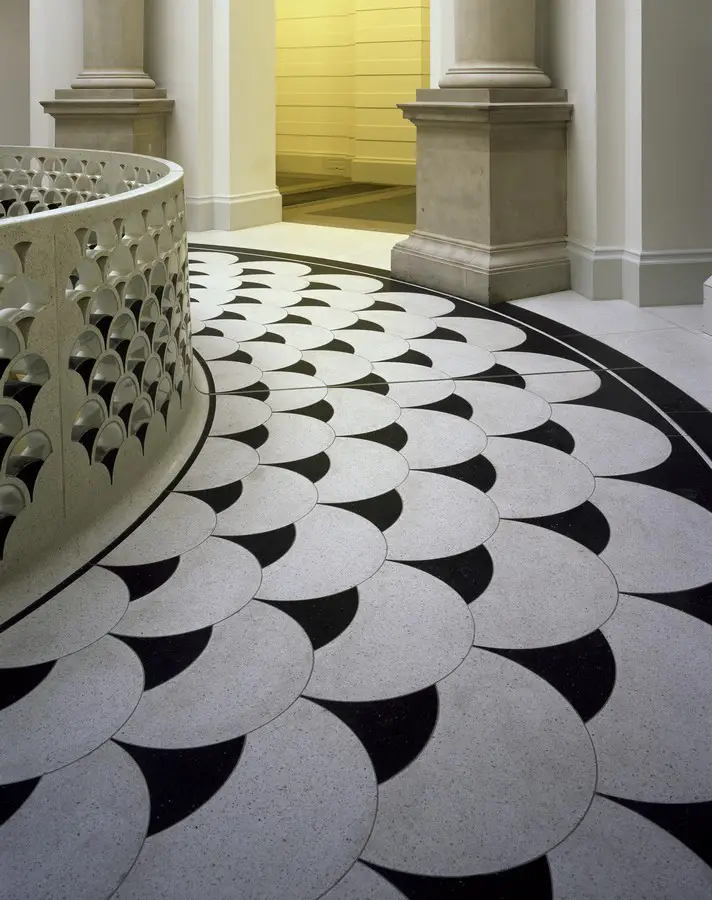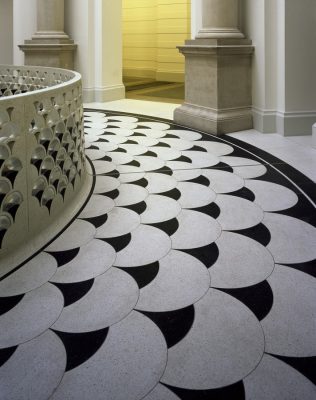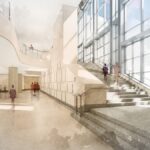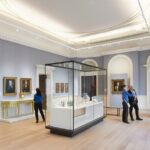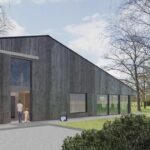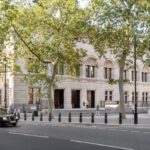Tate Britain Building, Pimlico Architecture Image, London Art, Photo, Architect, Design
Tate Britain London Building
Art Gallery Building Renewal, England: Architecture design by Caruso St John Architects, UK
20 Jun 2014
Design: Caruso St John Architects
RIBA Awards 2014 one of the LONDON regional winners
Tate Britain Renewal Award
One of the world’s most famous and distinguished art galleries has completed a significant refurbishment, intended to extend the repertoire of social spaces inside the gallery.
The vast array of improvements to the gallery are part of the first phase in a programme the Tate has called ‘Transforming Tate Britain’. The plans include a refurbishment of the south eastern galleries, the creation of a new schools’ area, a new café on the lower ground level, bringing the upper level back into public use and opening up a new members’ area on the Millbank side of the first floor.
2 Jul 2010
Tate Britain – Approval
Architects: Caruso St John
Westminster City Council Press Release
Major plans to transform Tate Britain given the go ahead
One of the world’s most famous and distinguished art galleries, The Tate Britain, is set for a revamp following a decision made by Westminster City Council on the evening of 1 July 2010.
Westminster City Council’s planning and City Development committee has granted permission for a significant refurbishment of the Tate which is intended to extend the repertoire of social spaces inside the gallery.
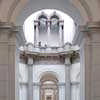
photo from Westminster City Council
The vast array of improvements to the gallery are part of the first phase in a programme the Tate has called ‘Transforming Tate Britain’. The plans by Caruso St John Architects include a refurbishment of the south eastern galleries, the creation of a new schools’ area, a new café on the lower ground level, bringing the upper level back into public use and opening up a new members’ area on the Millbank side of the first floor.
Cllr Alastair Moss, Westminster City Council’s Chairman of the Planning and City Development Committee, said: “Westminster is renowned for its many famous and prestigious cultural organisations and buildings and we are keen that we continue to encourage the arts here. “In Westminster our aim is to foster world class galleries and we feel that these improvements will make sure that the Tate continues to be a global success. These plans will enhance this Grade II listed building, and improve an already successful and internationally renowned gallery making it even better for people who want to visit it.”
As part of the plans natural light will be reintroduced to the south east quadrant galleries, two new staircases will be created and it is hoped that the Millbank and Manton entrances will be better connected. A new central staircase in the Tate’s rotunda,, made from white concrete and adorned with transluscent glass balustrades will connect the principal and lower levels for the first time. Its floor pattern is an interpretation of the original mosaic floor which was destroyed in 1928. The gallery’s River Room, which was originally a watercolour gallery room and has since been divided into three office rooms will also be reinstated as a single room for the public to use.
The new café will open out onto the garden and the schools’ reception will be located below the foyer and Millbank steps, and there will be a dedicated schools entrance, with the provision of space for learning set to be increased.
The Grade II listed Tate Britain building is a complex building which has grown in fits and starts following 110 years of additions and alterations. The Tate Britain stands on the site of the former Millbank prison which opened in 1821 and was closed and demolished in 1892.
When Henry Tate donated his art collection to the nation in 1889, Sidney Smith drew up a series of designs for a new building which were criticised as over complex and a final scaled down design which included a gallery with seven rooms on the principal level, with an upper level and watercolour gallery was built and finally opened in 1897.
31 Mar 2010
Tate Britain Architects : Caruso St John
Transforming Tate Britain application submitted for planning
Tate has submitted the planning application for an exciting project to transform its original London gallery, Tate Britain. Transforming Tate Britain aims to conserve the beautiful fabric of Sidney Smith’s 19th-Century building and carry out a major upgrade to the galleries, enabling Tate to show more of its Collection in conditions suitable for a wider range of art media.
The project will remodel and renovate core visitor areas – opening up the stunning domed atrium at the heart of the gallery – while creating much-needed learning studios and public spaces in order to meet growing demand. This phase of Tate Britain’s development will span 2010 to 2013 and is budgeted at £45 million, half of which has been raised already.
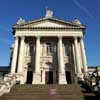
Tate Britain photo © Nick Weall
The Tate Britain project is designed to meet several key objectives:
To increase capacity and improve conditions for the display of art
Nine galleries in the southern and oldest part of Tate Britain will be reconstructed to 21st-century standards with completely new walls, roofs and floors. Gallery floors will be reinforced to hold larger sculptural works, and temperature and humidity controls will be improved through better insulation and ventilation, improving display conditions and allowing greater curatorial flexibility. New galleries will also be created in and around the space formerly housing the shop, which will be relocated to the Southwest quadrant of the building.
To transform the main entrance and Rotunda dome
The magnificent entrance on Millbank will be re-established as the public face of Tate Britain. The domed atrium at the heart of the gallery will be opened up with a striking new spiral staircase to create a focal point and improve visitor orientation and circulation. The stunning circular balcony of the Rotunda dome – closed to visitors since the 1920s – will be reopened via a new lift and staircase as a new area for Tate Members.
To place learning at the heart of the organisation
New purpose-built learning spaces around the gallery will be developed with easy and direct access to art. A dedicated Schools’ entrance and reception will be created underneath the Millbank entrance steps. The reception will provide entrance and exit from the front landscape, and have a lunchroom capacity for 130 children. In addition, a beautiful room overlooking the river Thames above the Millbank entrance will host a wide range of seminars, public events and learning programmes.
To transform the visitor experience
Visitor figures at Tate Britain have risen by 60% over the past 10 years, placing high demand on the public spaces and facilities around the building. A new café will therefore be created on the ground floor at the front of the gallery, leading onto a new external terrace. As well as opening up the spaces around, above and below the Rotunda, the shop will also be relocated and upgraded to further improve layout and ease visitor flow.
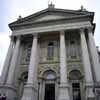
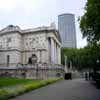
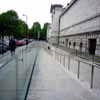
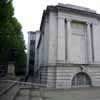
Tate Britain London : photographs © Adrian Welch May 2007
Construction is scheduled to begin in March 2011 and is scheduled to complete in 2013. The project architects are Caruso St John, structural engineers Alan Baxter Associates, services engineers Maxfordham Partners, cost consultants Turner and Townsend, and project managers Drivers Jonas.
Clore Gallery is part of the Tate Gallery, mostly containing Turner paintings, adjoining to east of main building:
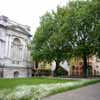
photograph © Adrian Welch
Clore Gallery Tate Britain
Address: Millbank, London, SW1P 4RG
Contact Tate Britain: 020 7877 8888
Location: Tate Britain, Millbank, London, SW1P 4RG, England, UK
London Buildings
Contemporary London Architecture Designs
London Architecture Designs – chronological list
London Architectural Tours – tailored UK capital city walks by e-architect
James Stirling Michael Wilford English Building
Tate Gallery, Liverpool, UK (phase 1 JSMWAL phase 2 MWPL phase 3 B+BAL)
Tate Modern London
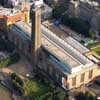
photo © webbaviation
Tate Gallery : Liverpool
Tate Modern Extension
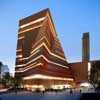
image © Hayes Davidson and Herzog & de Meuron
Tate Britain Centenary development, Millbank, SW1
2002
John Miller & Partners
£22m
Tate Britain London Photographs taken with Panasonic DMC-FX01 lumix camera; Leica lense: 2816×2112 pixels – original photos available upon request: info(at)e-architect.com
Pimlico houses just to west of the Tate Gallery ; Tate Britain – context to west:
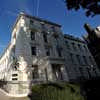
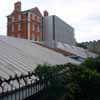
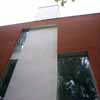
photo © Nick Weall ; pictures © Adrian Welch, May 2007
Comments / photos for the Tate Britain Architecture page welcome

